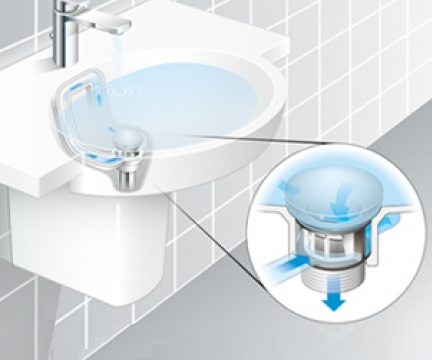How to independently clean the drain of the bathtub and sink
Please tell me if you have encountered: the drain in the bath is clogged. If you open the faucet in the kitchen, then water from the drain drains into the bathtub. If you open the sink faucet in the bathroom, then in the drain of the bath, water begins to gurgle. I cleaned with a rope 2.5 meters, like the water began to leave well.
BUT! after 15 minutes, the same situation in the bath. Namely, the water stopped flowing again and at the same time poured out of the drain in the kitchen (not from the sink, but at about the level of a bathtub drain; in the kitchen, a flexible hose was disconnected to put a cable into it).
The question is: if you cleaned, then why does the water not go away again? And where did she go immediately after cleaning? Where and how to clean next? Tiret flooded at night. In the morning, like, water leaves. But now I am afraid to collect the hose in the kitchen, because it can again pour at any time. Thank you for your help.
Victor
Expert Answer
Hello, Victor.
In your situation, everything works according to the classical law of communicating vessels. This happens because the blockage is not in the drainage area from the sink or sink, but directly at the entrance to the riser, that is, after the bath. This, in fact, is indicated by the fact that after filling the sink, wastewater fell into a tank installed near the floor.
In order to eliminate clogging, you should clean the line along which dirty water leaves the bathroom and the riser. You can do this in different ways, but in your case it is best to use a plumbing cable. And that's why. The use of chemicals also gives a good result, but, as practice has shown, in places of a sharp difference in cross sections (and this is exactly the case with you), such means as “Mole”, “Tiret”,“ Antizasor ”and others act pointwise, not systemically. This is manifested in the fact that the alkali breaks its way in the form of a thin channel, after which it immediately leaves for the main highway. Of course, such cleaning solves the problem only for a while, so the risk of flooding remains. When using a plumbing tool with a hard brush-brush, you will completely remove all deposits not only from the walls of the branch line, but also in the most likely place - where it is connected to the riser.
By the way, you didn’t write anything about the toilet at all, which means that it is connected in a separate branch - otherwise, the drain from the kitchen would also get there. If water from the toilet leaves normally and its level does not rise when the tap is opened in the kitchen or in the sink, then the likelihood of clogging of the riser can be eliminated. And this significantly reduces the scope of searches and reduces the amount of repair work.


